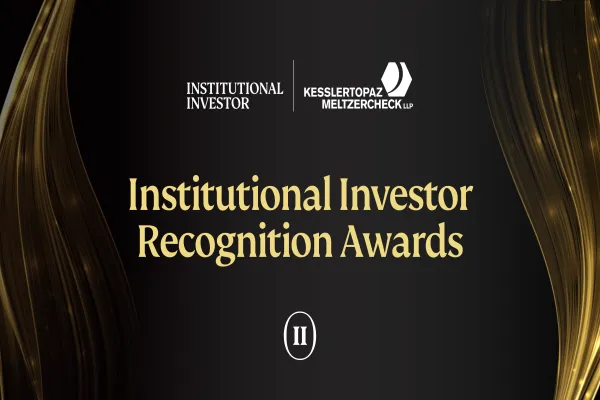As growth in China has soared over the past 15 years, the image of high-ranking Communist Party officials toasting one another at events with goblets of expensive French wine became something of a cliché. Then Xi Jinping took a tour of southern China in December 2012.
The trip, his first as head of the Communist Party and one laden with symbolism, was a model of austerity. No roads were closed to make way for his official motorcade. Buffet dinners were sparse affairs with few dishes, and little or no wine was consumed. Xi reinforced that démarche by declaring a nationwide crackdown on government corruption when he assumed the presidency in March last year, with party officials’ conspicuous consumption of luxury items firmly in his sights (see also “China Economy Stays on Track but Rebalancing Risks Remain”).
The depressed state of the international wine market suggests that the campaign may be working. “Given the size of the Chinese state sector in the overall fine wine market, one should not underestimate the impact” that Xi’s crackdown has had on wine prices, says Justin Gibbs, co-founder and sales and marketing director of Liv-ex, a London-based firm that runs the global wine industry’s leading exchange. But even amid the gloom of a protracted slump in wine prices, many investors think emerging markets like China might still provide the source for the next surge in global demand.
Prices for tradable, investment-grade wines, a global market that industry observers estimate at anywhere from $5 billion to $10 billion, have been in decline for three successive years, a situation unprecedented in the three decades that wine has been treated as a professional investment vehicle. Although fine wine has historically generated annualized returns of 10 percent to 12 percent, “returns over the past five years are basically zero,” says Gibbs. “The doom and gloom are palpable.”
The Liv-ex fine wine 100, the firm’s benchmark index, rose dramatically from 2005 to mid-2011 — climbing from 100 to 365 — on the back of a powerful upturn in demand from China, which rapidly became the largest export market for wines from the storied Bordeaux region of southwestern France, which make up 95 percent of the index. China’s recent economic slowdown, coupled with a sell-off generated by the troubles of two of a handful of notable wine funds and a market-wide realization that high-end wine producers had inflated their prices to ride the Chinese demand wave, caused the bubble to burst. Since June 2011, the index, which is calculated monthly, has fallen sharply, touching 255 at the end of January.
Industry observers had expected the market to rebound a year or two after the drop-off in 2011, but the strength of Xi’s anticorruption drive appears to have changed the dynamic. Fine wine, in this sense, offers an unlikely proxy for the state of governance reform in China, a key plank in the government’s ongoing efforts to rebalance the economy away from investment to consumption. “A lot of the money being used to purchase wine in China was state money — high-ranking officials in state-owned enterprises oiling the wheels of business,” says Miles Davis, co-founder of Wine Asset Managers, a $20 million London-based wine investment fund that caters to individual and institutional investors, mainly family offices and funds of funds. Xi’s clampdown on graft “has had a very significant effect on the market, and that’s not the kind of consumption base that’s likely to come back,” adds Davis.
The evaporation of the Chinese state sector’s thirst for fermented grape juice does not necessarily spell the end of emerging markets’ participation in the fine wine market, however. Fine wine generally exhibits low correlations to other assets, but, according to Gibbs, it is most closely tied to gross domestic product growth in emerging markets. In the short term, many wine investment managers expect the global market to rebound on a pickup in demand from traditional and new collectors in the U.S. and Europe. “The market starts again when the traditional collector in the developed economies can buy again,” argues Gibbs, adding that many of those buyers had been priced out of the market during the Chinese-led boom. “Prices are calming down, and we’re getting back to that.”
Notwithstanding the boom in wine growing in recent decades in the so-called New World — essentially, any wine-growing region outside Europe — and the long traditions of viticulture in Italy, Germany, Spain and other regions of France, the investment-grade wine market remains dominated by Bordeaux, the only region with the prestige and sufficient production volume to nourish a liquid secondary market. In May the estates of Bordeaux will release their 2013 vintages, and many of the wines are expected to be average at best because of poor weather conditions last year. That would stand in marked contrast to 2009, which leading wine critic Robert Parker described as “the single greatest vintage ever produced in Bordeaux since records have been kept.” That critique fed the bull market over the following two years. With estates expected to lower their prices and a semblance of overall health returning to advanced economies, traditional investors should be encouraged to return to the market. “The Western world will recover, confidence will return, and people will be prepared to spend again,” predicts Davis.
Beyond the short term, however, the correlation to economic growth in the developing world assumes greater importance. Emerging markets, despite their recent downturn, loom as a deep source of long-term investment potential for wine fund managers. The leading Bordeaux estates are already promoting their wines aggressively in India, and “it is safe to assume that there will be further countries and regions entering the market over the medium and longer term,” asserts a recent research paper published by the London-based Wine Investment Fund. Chinese consumer demand has stayed robust and continued to grow over the past year, even as Xi has cracked down on official excess. As a result, whereas the pre-2011 boom was undisciplined and driven significantly by Chinese officials living large on the government tab, many in the industry expect the coming surge in emerging-markets wine investment to be led by private capital and exhibit a far more disciplined, less bubblelike profile. “Private individuals tend to be more cautious with their own money,” notes Gibbs.
There’s evidence that wine fund backers are thinking creatively to position themselves for the next upswing in the market. Brian Mota started the Wine Trust with Timothy Clew in 2008 after more than a decade working in finance, the bulk of it as an investment banker at JPMorgan Chase & Co. From the beginning, their strategy was counterintuitive. Whereas most other wine funds are structured like hedge funds or open-ended mutual funds, Mota and Clew chose a private equity–type structure — requiring investors to commit to a minimum eight-year lock-up — for their fund, which now has some $20 million in assets under management, according to Mota. This feature, he claims, has helped the Wine Trust avoid the short-term focus of other funds and insulated it from the possibility of a run of redemption requests. Such runs were the undoing of Nobles Crus, one of the largest public wine funds, which was suspended by regulators in its home jurisdiction of Luxembourg last year after it ran out of money to meet redemption requests, and of the Vintage Wine Fund, a Cayman Islands–registered fund run out of Scarborough, England, which shut down last year and returned money to investors.
Mota and Clew have spurned investment in the traditional high-end, first-growth Bordeaux wines, which can sell for thousands of dollars per bottle, in favor of an approach targeting more affordable wines not just from Bordeaux but from other regions of France, such as Burgundy and the Rhône, as well as Italy’s Piedmont and Tuscany.
Priced at about $100 to $200 per bottle, these wines have what Mota terms “a durable consumption rationale attached to them,” which is the key to the Wine Trust’s investment approach. “Wine has to get rarer over time to fuel capital appreciation,” he explains, adding that the best way for this to happen is for “people to put the stuff down their throats. You need wines that people are drinking.” This approach is opposite to that taken by most wine funds, which focus on elite wines less susceptible to immediate consumption and more able to act as an independent store of value.
Finally, Mota and Clew have built a wholesale distribution business, which gives them the ability to liquidate their positions more efficiently, regardless of sales conditions. “We distribute wines to the marketplace, as opposed to relying on others to do that through the secondary market,” says Mota.
Mota says the fund has generated returns “in the mid-to-high teens annualized” since its launch, adding that this has been achieved “at a time when the market has been flat.” The way he describes it, the fund is designed to be largely bubble-proof. As China became the dominant buyer of red wines from prestigious estates such as Château Lafite Rothschild and Château Latour through 2009 and 2010, Mota and Clew interpreted this as a strong sell signal.
“It’s a globally balanced market,” says Mota. “If an imbalance takes hold geographically in terms of who is buying the wine, that’s a sell signal to us.”
Mota and Clew also took a deeper lesson from the market decline that followed in 2011: Funds focused on high-end, prestige wines would always be susceptible to buying imbalances and the bubbles they generated. After 2011, “the funds skewed to big brand names suffered the biggest fall in price,” says Mota. That is why he and Clew have taken a more middle-range approach. Because the wines they buy appeal to a broader — and more actively thirsty — consumer base, there is less likelihood that the market will be hijacked by a single investor or purchaser group, lessening the prospect of a speculative bubble.
This approach could be precisely the kind that will benefit as the moderately affluent in emerging markets, especially China, begin to drink more fine wine. When consumption in these markets grows, so presumably will the number of wines with the consumption figures to fit into the Wine Trust’s strategy. That approach is evidence of an increasing technical sophistication in the wine investment world, which Gibbs argues provides cause for optimism as the industry prepares for a rebound. “The fine wine market surged in the ’90s, in the ’80s, in the ’70s,” he says. “It’s now back to a normalized price level, and it will come back again. We think this market is at the beginning of its evolution.”
Follow Aaron Timms on Twitter at @aarontimms.







